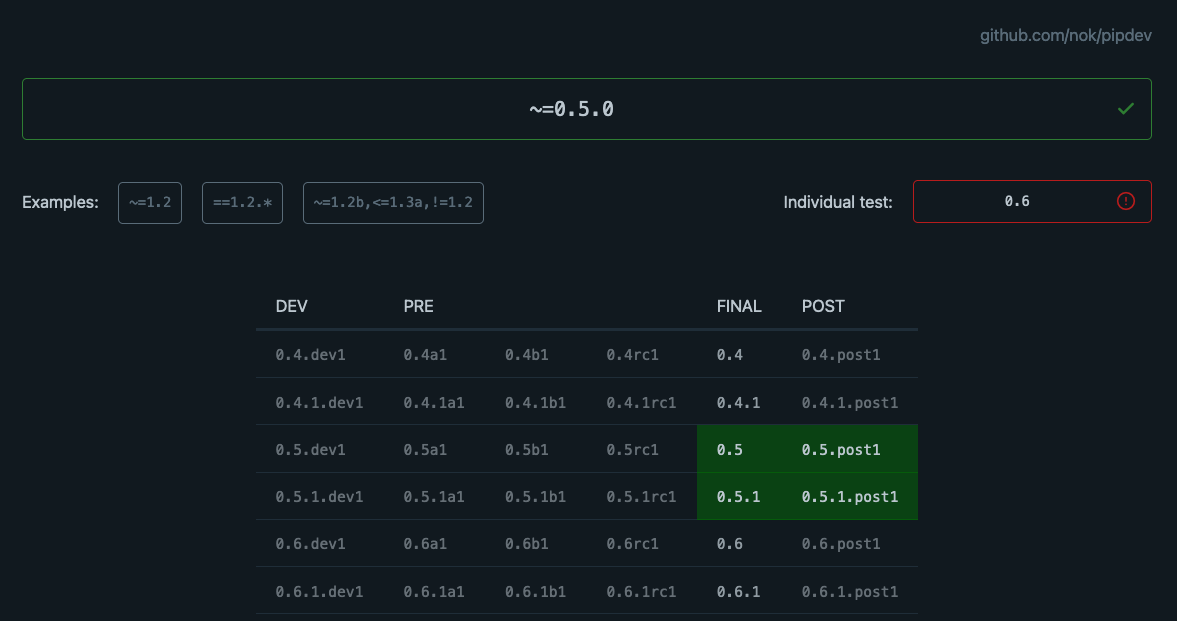I'm wondering if there's any way to tell pip, specifically in a requirements file, to install a package with both a minimum version (pip install package>=0.2) and a maximum version which should never be installed (theoretical api: pip install package<0.3).
I ask because I am using a third party library that's in active development. I'd like my pip requirements file to specify that it should always install the most recent minor release of the 0.5.x branch, but I don't want pip to ever try to install any newer major versions (like 0.6.x) since the API is different. This is important because even though the 0.6.x branch is available, the devs are still releasing patches and bugfixes to the 0.5.x branch, so I don't want to use a static package==0.5.9 line in my requirements file.
Is there any way to do that?


"package>=0.2,<=0.3"doesn't make a lot of sense: when would you be okay with both 0.2 and 0.3.0, but not with any of 0.3's bugfix releases? I think"package>=0.2,<0.3"is a much better example, because it reflects the common case of saying: "please give me the latest bugfix release of the current minor version, but don't automatically upgrade me to the next minor version, because I would like to do that explicitly, making sure that there are no functional changes affecting me." – Unfetter